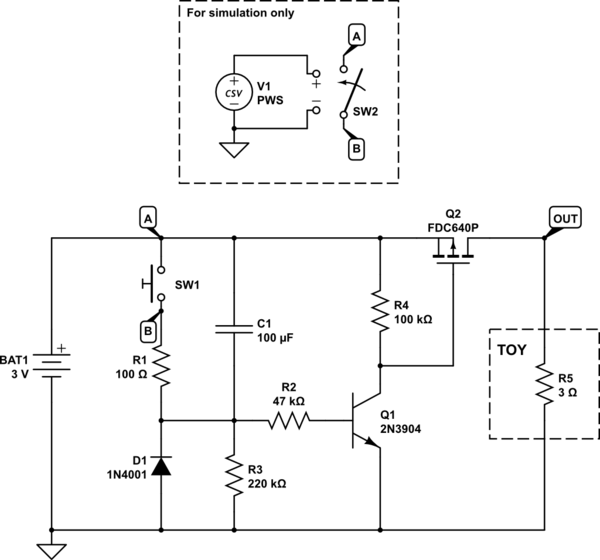Here's a two-transistor solution:

simulate this circuit – Schematic created using CircuitLab
Momentarily pressing SW1 will discharge C1, which will then slowly charge up again. Until the voltage across C1 returns Q1's base to 0.7V, Q1 and Q2 will be on, and the toy is powered.
Using R2 = 47kΩ, and C1 = 100μF, it takes about 15s to return to the off state. You can increase either R2 or C1 to lengthen that delay.
For this to work reliably, Q2 must have \$V_{GS(TH)} < 2V\$, and \$R_{DS(ON)} < 100m\Omega\$.
I nearly forgot to mention, this design draws almost no current from the batteries when the toy is off.

